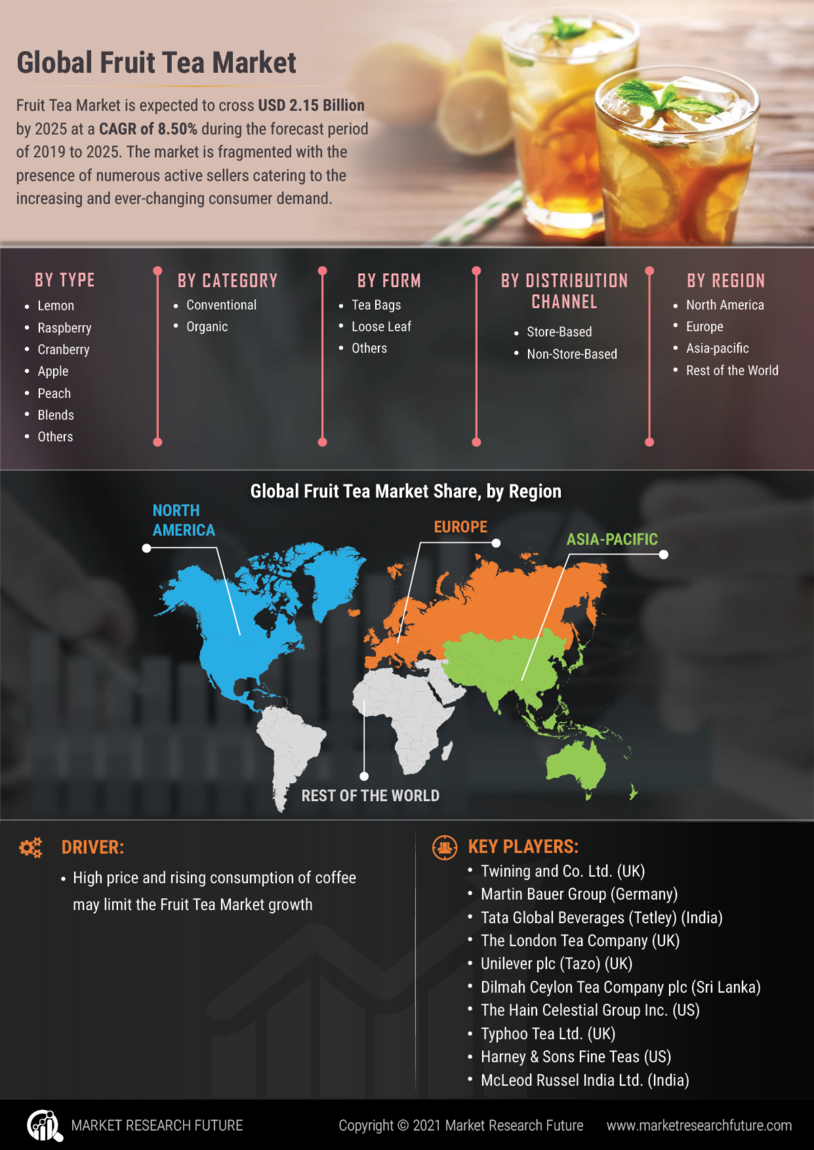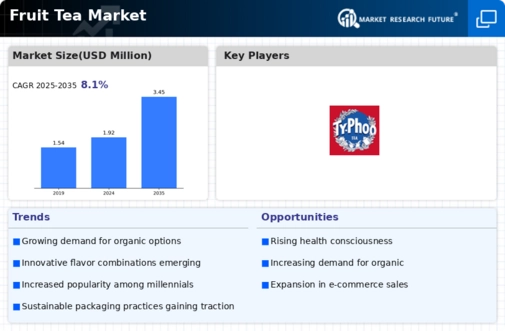Fruit Tea Market Summary
As per Market Research Future Analysis, the Global Fruit Tea Market is projected to surpass USD 2.34 Billion by 2030, growing at a CAGR of 8.10% from 2020 to 2030. The market is characterized by a fragmented landscape with numerous regional and local players, including notable brands like Dilmah. The increasing demand for functional beverages, driven by health benefits such as immunity boosting and metabolism enhancement, is propelling market growth. The rise in health consciousness and preference for alternatives to sugary drinks further supports the market's expansion. However, competition from other beverages like coffee and the higher price point of fruit tea compared to regular tea pose challenges to growth.
Key Market Trends & Highlights
The fruit tea market is witnessing significant trends driven by health awareness and flavor innovation.
- Market Size in 2020: USD 1.67 Billion, accounting for 28% of the global functional tea market.
- Fastest-growing segment: Lemon Raspberry Cranberry Apple Peach blends, driven by health consciousness.
- Convenience segment: Tea bags expected to grow rapidly due to consumer preference for easy preparation.
- Rising demand for organic fruit tea as health benefits gain awareness among consumers.
Market Size & Forecast
| Market Size Forecast | USD 2.34 Billion by 2030 |
| CAGR | 8.10% from 2020 to 2030 |
| Largest Regional Market Share in 2018 | North America |
Major Players
Dilmah Ceylon Tea Company PLC, Twining and Co. Ltd., Martin Bauer Group, Tata Global Beverages, Unilever plc, The Hain Celestial Group Inc., Typhoo Tea Ltd., Harney & Sons Fine Teas, McLeod Russel India Ltd., The Stash Tea Co.












Leave a Comment